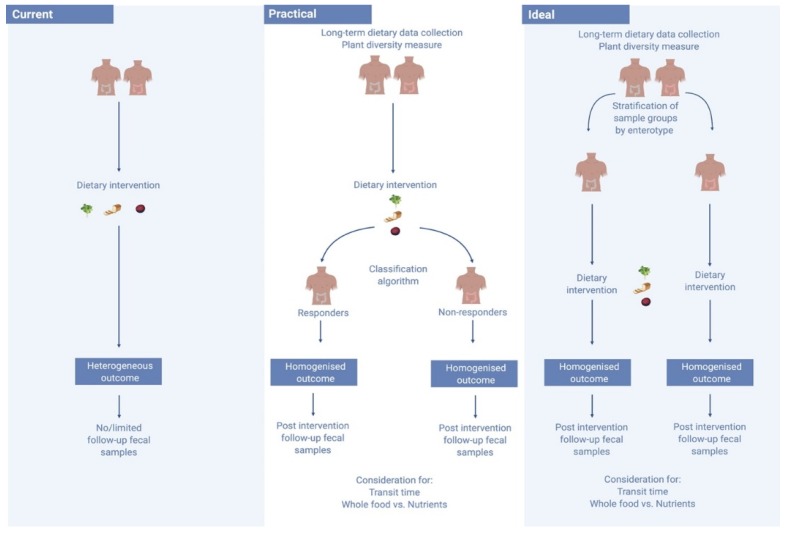Figure 2.
Moving from current to an ideal diet–microbiome study structure. Currently, diet–microbiome studies fail to consider a number of limitations, including the personalised microbiome, leading to heterogeneous outcomes. In an ideal setting, sample groups would be stratified by enterotype prior to the commencement of an intervention. Yet, faecal samples can take a lengthy time to process, stymieing study progress. A practical solution could be the use of a classification algorithm to stratify responders and non-responders with the hope of improving study outcomes. This image was generated using BioRender Software (http://www.biorender.com/).

